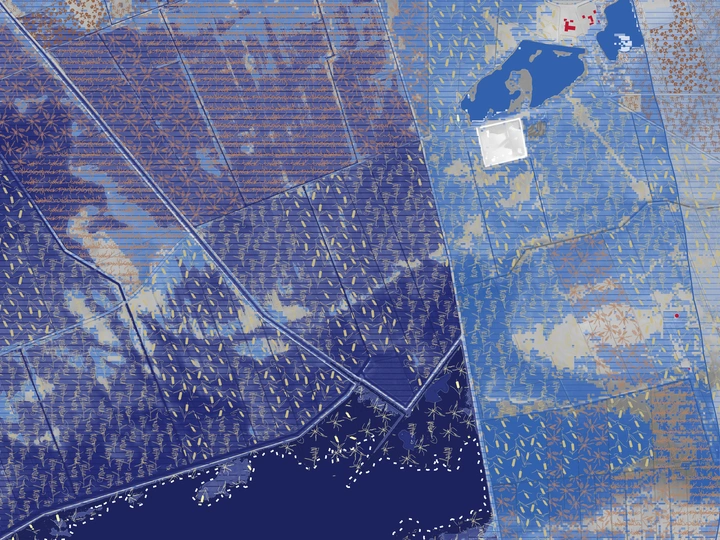Lowland Farmland Changeland

I’m a recent architecture graduate with a master’s degree from Aarhus School of Architecture, where I studied in the Emerging Landscapes studio. During my studies, I worked as a research assistant with Katrina Wiberg, contributing to projects exploring how landscapes respond to rising groundwater, sea level rise, and changing land-sea dynamics.
My interest lies in everything related to water, future scenarios, and the yet unknown. I work analytically and solution-oriented, often through mapping and cross-disciplinary collaboration. I’ve been involved in projects connecting land use, groundwater, and coastal systems, always aiming to make complex relationships visible and discussable.
I’ve received two study awards, one of them for my thesis, which I submitted here.
Lowland Farmland Changeland proposes a strategy to guide long-term change and adaptation of the Danish lowlands, where former wetlands are being extensively drained for agriculture. Due to naturally high groundwater tables, these landscapes are especially vulnerable to sea level rise and the resulting groundwater level rise caused by climate change. The project follows the entanglement of agriculture and water, envisioning a water-based strategy centered around tipping points that arise from the correlation between rising water levels over time and the extent of land ownership spatially affected. To prepare for these moments, the project introduces agricultural practices that can adapt to higher water tables and that are organized through increasingly larger forms of collaboration among farmers. Farming the lowlands contributes to well-known environmental problems, but by applying lowland-specific methods, these areas can also become powerful tools for CO₂ storage, soil and water purification, and ecological regeneration—while including farmers in the process. Critically guided and yet not confined by Grøn Trepart, the project combines scientific investigations with economic and technological considerations, plant literacy, fieldwork, and farmer surveys to develop an inclusive approach. One challenge was the lack of tools to visualise rising groundwater tables, which the project addresses by combining seasonal groundwater data with sea level rise projections. A farmer survey helpes integrate local perspectives on the Grøn Trepart, climate concerns, and willingness to collaborate—shaping a more grounded and participatory strategy. Rather than imposing a fixed solution, the project works with the changing land offering a flexible framework that can evolve with future waters.